If the universe calls back

In Karachay-Cherkessia, near the village of Zelenchukskaya, you can drive past a long fence. More precisely, it may seem so, if not look closely at the trees. And if you look closely, it turns out that next is a unique Russian astrophysical instrument that does not have world analogues ™: the RATAN-600 radio telescope .

The RATAN - Radio Telescope of the Academy of Sciences is a 588-meter ring of 895 flat metal reflectors 11.4 meters high. It is part of the Special Astrophysical Observatory of the Russian Academy of Sciences .
')

I read about this telescope in the Soviet astronomy textbook and, since then, I have heard almost nothing about it. To my shame, I was pretty sure that if I couldn’t hear anything, then it all fell into disrepair and works well, if at all. The current state of the ancestor of the RATAN-600 of the BDP Pulkovo radio telescope suggested such thoughts:
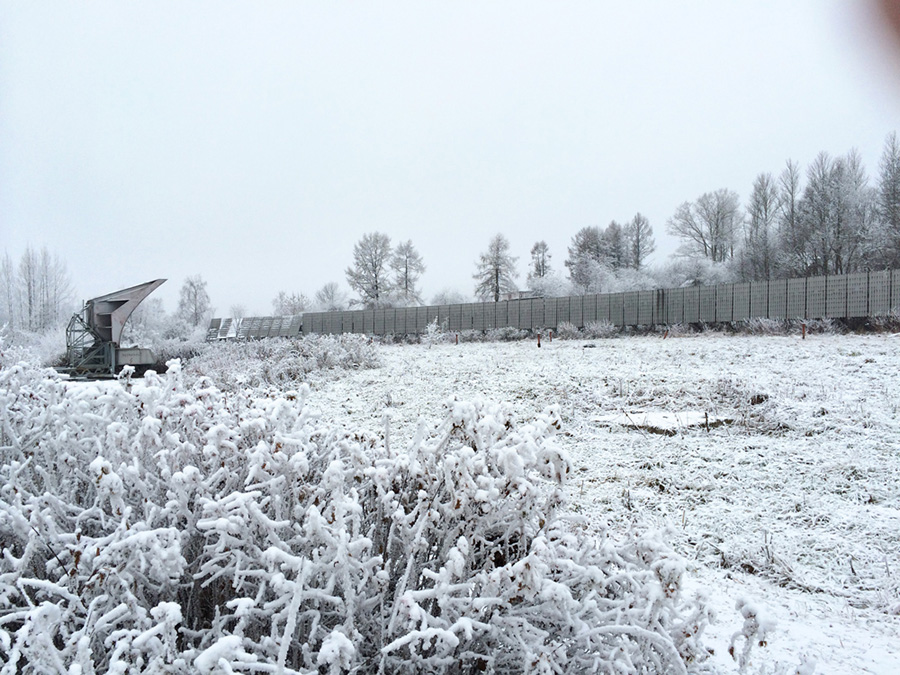
On it, everything was overgrown and rusted for a long time, therefore there were fears for RATAN.
Fortunately, the tour, organized by my friends from the company Intellect Tour helped to dispel misconceptions and convince the groundless fears.

RATAN-600 shines against the backdrop of the mountains.

And it works non-stop.
Even when no movement is visible - the Earth is moving, and it is the “mount” that directs the telescope.
The RATAN-600, unlike the more well-known Arecibo, does not have a solid dish, and is an antenna with a variable profile. The deflected mirror reflecting panels act as an element of the conditional paraboloid , which focuses the received signals on the movable reflectors. Radiometers mounted on reflectors register signals.

Inside the reflecting ring, seven secondary feed mirrors move along the rails: six flat and one conical.

There is also an additional four-meter flat reflector.

The conical feed has the most alien appearance, so it can often be seen in the illustrations of the RATAN. At the same time, this is the latest element of the system, added ten years after the opening of the radio telescope.
Thanks to several irradiators, the telescope can conduct observations of up to seven objects simultaneously, but it actually works less. At the same time, the work is ongoing and, as they say , the number of applications is only growing.

Held on a telescope and guided tours. We had the opportunity to even ride a telescope, more precisely in the cockpit mirror-irradiator.
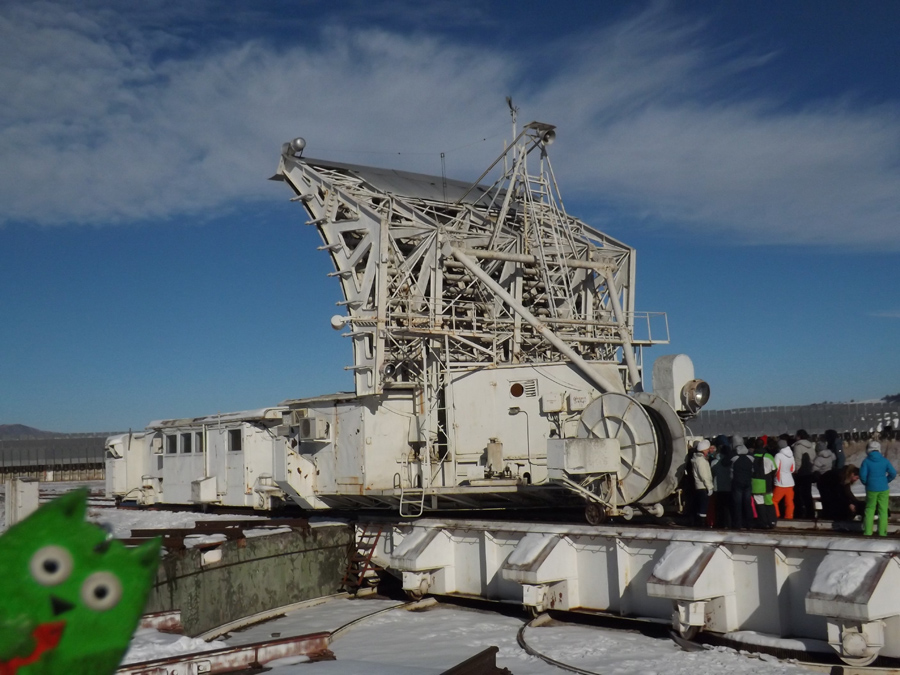
Climbing up to the roof of the cab, you can better consider the mirror-irradiator.

Look here at the line of radiometers that provide a wide band of the spectrum of the detected radiation.
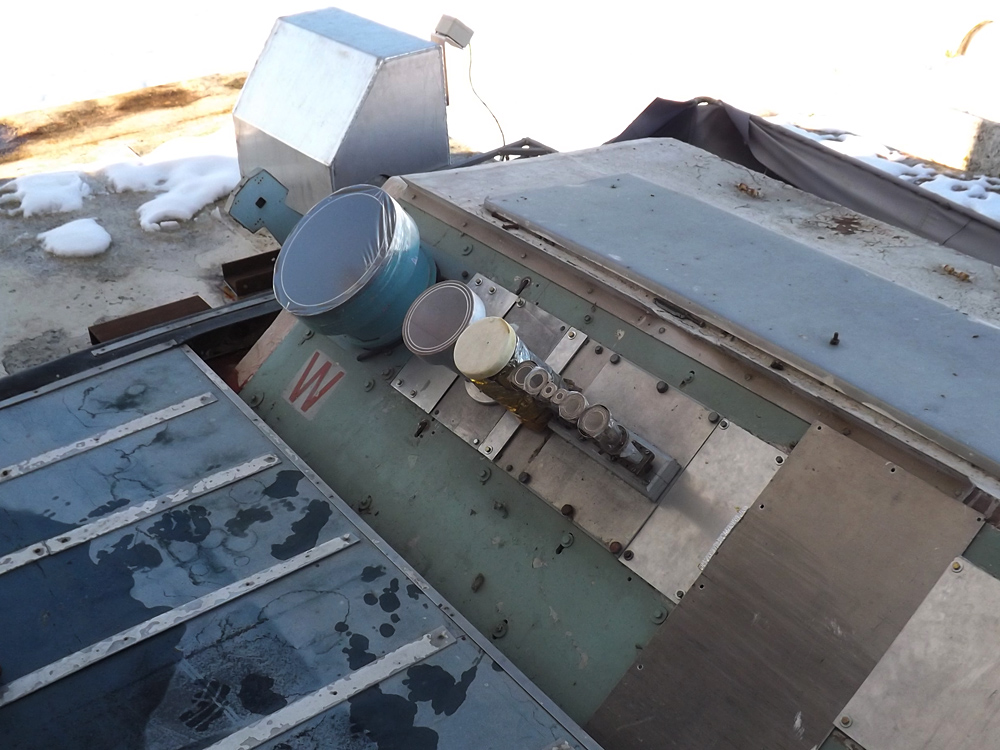
Inside the cabin is cozy and casual:
 Modest workplace explorer of the universe.
Modest workplace explorer of the universe.Behind the wall is receiving equipment.
 On the walls - motivating pictures from National Geografic
On the walls - motivating pictures from National Geografic
Today, working time is distributed as follows: 50% is allocated for the implementation of scientific programs of Russian radio astronomers, 30% are employed in research of SAO RAS, the remaining 20% are allocated for foreign applications.
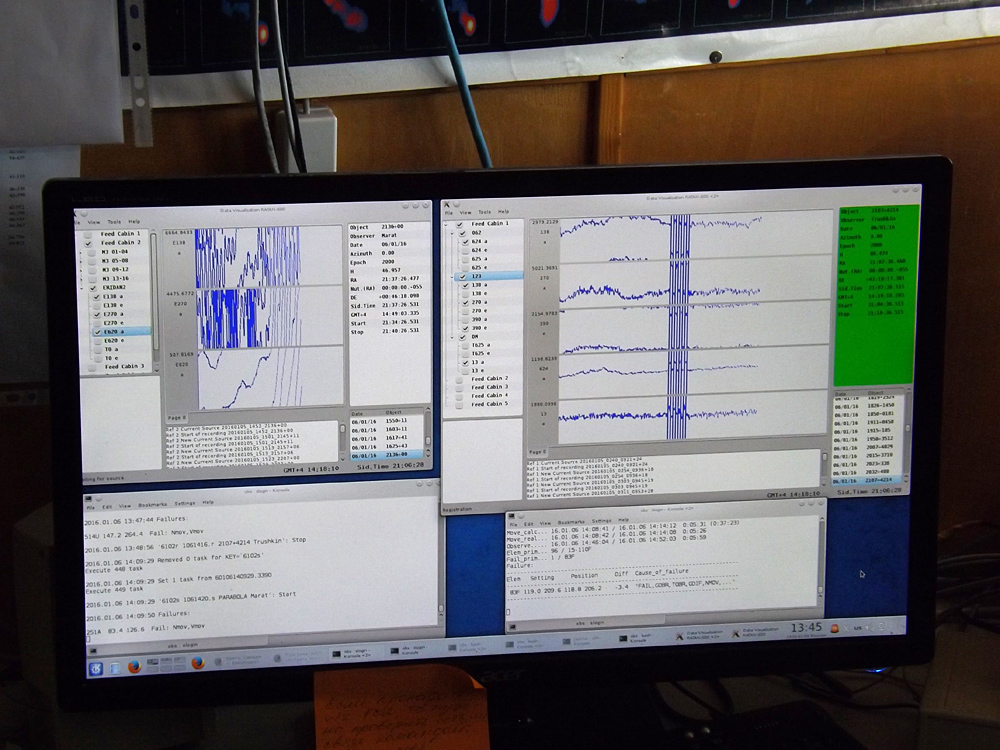
RATAN studies practically everything that can be radiated in the radio band. Works, among other things, in the framework of the Radioastron project.
During his youth, and during lunar eclipses, the radio telescope explored the lunar surface for anomalies. The results of this work on the CAO website highlighted one page , and the most interesting is hidden behind two sentences: For the first time, radio emission was recorded at 1.38 cm and 2.7 cm of the Copernicus crater on the surface of the Moon. The results of processing indicate an increase in the temperature of the moon in this crater to 70–100 K at a depth of about 5–6 m .

What it says, unfortunately, is not explained, so we can only guess whether it is a sign of recent or future volcanism, deposits of ilmenite or just an alien base burned. In addition, I have not heard that domestic science was somehow interested in Copernicus crater, maybe in vain, or maybe little heard.
Another area of research is atmospheric. By registering signals from permanent space radio sources, it is possible to determine the properties of the atmosphere.
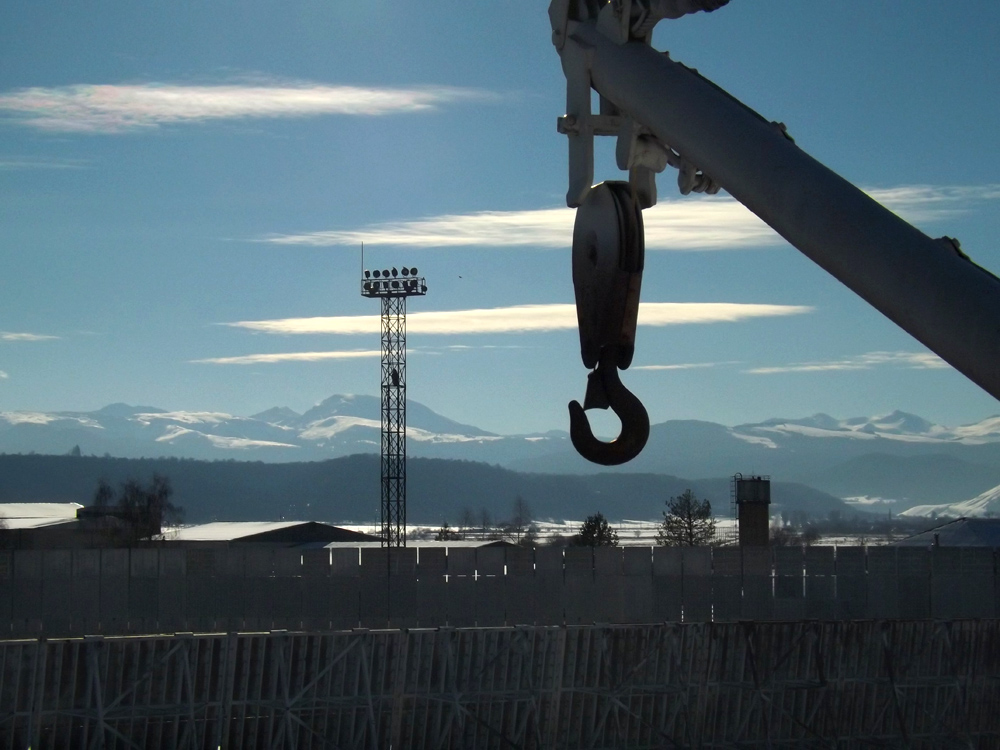
The sun too is an object for study. For example, on the SAO website, you can find the characteristic entry Zenith Mode - observations of the Sun on the N6 illuminator with part of the ring are planned for 1998 .
However, the main line of research is galactic and extragalactic radio astronomy. Everything that sounds in space, beeps or glows in the centimeter radio range is of interest to RATAN, however, he sees only what is available from the northern hemisphere.
Judging by the emotional description of the results of the RATAN, most of the scientists of the CAO are interested in relativistic emissions of microquasars - binary systems in our Galaxy, consisting of a large star and a black hole. Some of them have been monitored for decades, thanks to which cyclical processes are recorded in these systems.
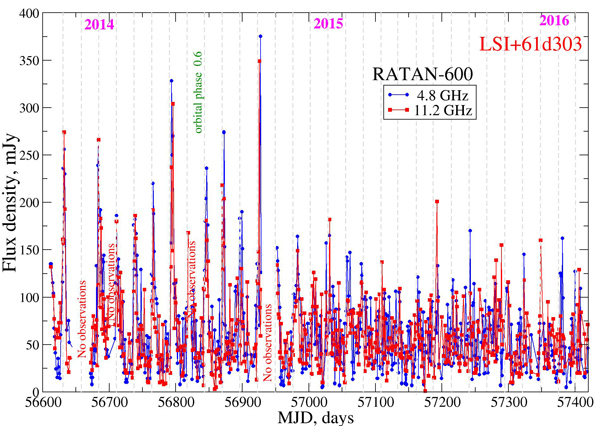
RATAN can tell his story about the role of female labor in science. Now the angle of inclination of the vertical reflectors is changed by automatic winches, on command from the central console. Until the 90s, the angle of inclination of the 11-meter panels was changed manually, using manual winches, which were alternately twisted by a couple of dozen employees of the Special Astronomical System of the USSR Academy of Sciences and later the Russian Academy of Sciences.

Men were trusted with less responsible work of operators and electricians. This practice made it possible to observe piece targets with a radio telescope during the day; the transition to automation allowed us to increase productivity by two orders of magnitude.

By the way, rejected at arbitrary angles of the reflector panel is not some kind of secret narrow range, but simply failed automation. Still, keeping track of nearly nine hundred drives is not easy, so some of them are always maintenance-free. Although no more than 5% offhand such panels, therefore, they should not cause any significant disturbances to the telescope's operation.

I left the radio telescope in high spirits, cool - science works, but there was a frustration, it all ended too quickly. Unable to look into the camera. It did not work out to talk with scientists, to hear their most recent tales “I look under this nebula, and there ...”
I hope there will be another reason to write about the results of this radio telescope.
Source: https://habr.com/ru/post/368551/
All Articles